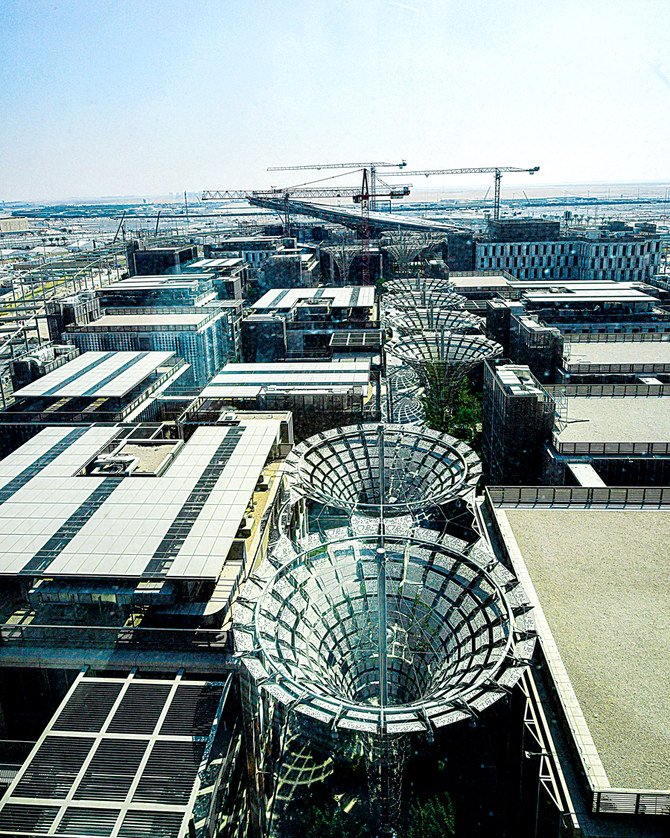
- ARAB NEWS
- 02 Jul 2025

Peter Harrison
LAS VEGAS: The future of construction is digital — anything else is doomed for the scrap yard. From planning, selecting the right contractors to the process of purchasing, the industry is fast becoming mastered by computer operators.
Reporting an accident is more efficient when it is done on software that enables patterns to be discovered.
And it does not stop there — the construction industry is a massive drain on natural resources and produces a third of the world’s waste.
Andrew Anagnost, CEO of the US-based multinational tech company, Autodesk, which focuses on the construction industry, told Arab News that the industry had a long way to go.
“The industry has to digitize … Construction generally, its productivity is terrible — we can’t afford this as a society anymore — it is like flushing money down the toilet,” he explained on the sidelines of a recent construction industry conference in Las Vegas.
Like all industries, data is a valuable commodity to the construction industry which can be shared — at a cost — with other projects, to reduce costs, waste and accidents.
“We can help people to build projects through the use of AI before they actually do it; this will give them a greater insight into the effectiveness of a project,” Anagnost said.
In doing this, he said, there could eventually also be a significant decline in unfinished building projects due to poor financial planning and erratic funding, where developers raise pockets of funds, build until that is spent and stop until more is raised.
The introduction of technology at a building site also allows joined- up thinking between the various aspects of the project, allowing any slight changes to a plan to be communicated to all departments.
All too often project managers complain about a breakdown in communications in the construction industry — an electrician drilling through a water pipe because the plan was not updated when the layout was changed is just one small example of the kind of things that go wrong on building sites worldwide.
By equipping project managers with tablets, they are able to be kept informed of any alterations to the plans.
The collection of data that is made possible through the digitization of the industry has the potential to revolutionize the construction industry, not least with safety.
Pat Keaney heads up the team at Autodesk that helps to solve workplace problems through the collection of data, which is being used to enable construction site firms to work more efficiently and safely with the hundreds of sub-contractors and trade companies that can be found on any given day. The more data there is, the better it gets.
“We have been able to look at things that go wrong on building sites — assess accidents and see what the recurring themes are,” Keaney added.
The technology being offered to the construction industry is so informative that designers are now able to feed vast amounts of information into a computer and then leave the software to map the most effective workflows.
This is especially useful in manufacturing and assembly plants where there is a lot of movement of people and objects.
By analyzing the mapping both the architect and the client are then able to establish which is the best layout for their operation. And if a company or developer does not even have a site, there’s technology to help with that too.
The US-based firm NearMap flies planes over cities, taking a vast amount of highly detailed images which are then used to establish the ongoing land use.
The imagery is available to clients who are able to identify where there is green space, or buildings that are being demolished.
“With the use of a selection of images taken from a number of angles, we are able to give people an insight into how their plans will look if they are put into practice,” said Nearmap CEO Rob Newman.
He said that the information gathered can tell tech firms whether a phone network will function, or if reception is blocked by towers — information especially important with the expansion of 5G networks.
While it is not currently being used in the Gulf region, the data that a company such as Nearmap is able to provide would be invaluable to developers in cities such as Dubai and further afield in Jeddah and Riyadh.
The question remains just how fast the construction industry will take up the technology being made available to them.
In the US there are signs of an ever-increasing ripple effect — but it will require companies such as Autodesk to chase the region’s business if it is going to expand into the Gulf.